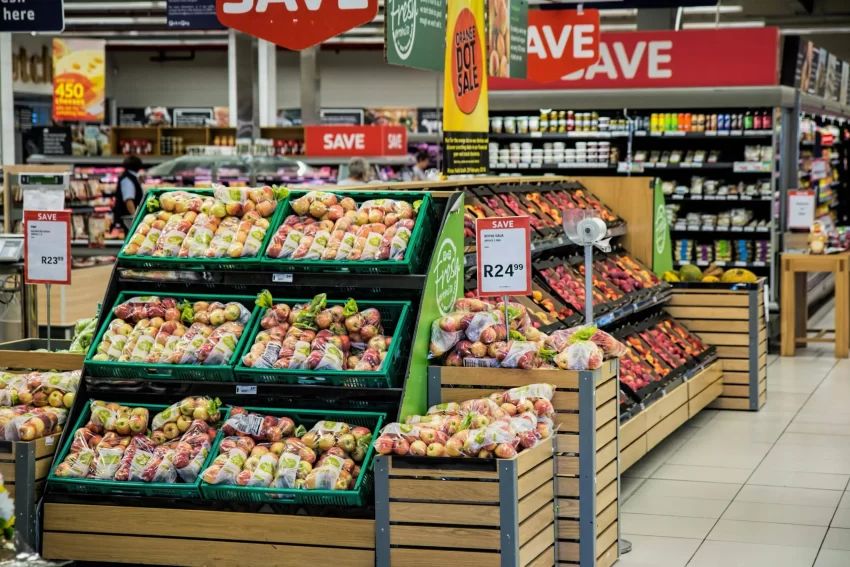The Benefits of Creating a Best Foods to Freeze List
Ever feel like your fridge is a black hole where perfectly good food goes to waste? You’re not alone. For small families, it’s all too common to use just a splash of chicken stock or half an avocado, only to watch the rest spoil before your next meal. Fortunately, there’s a simple solution: knowing what the best foods to freeze are and how to freeze them can transform how you store and use your groceries. With the right techniques, you can lock in freshness, cut down on waste, and always have key ingredients ready to go when inspiration strikes.
Convenience
In today’s world, convenience is key. That’s why freezing food has become an increasingly popular and practical solution for busy households. Not only does it offer convenience, but it can also lead to significant cost savings over time. Creating a go-to list of the best foods to freeze will help minimize food waste. As a bonus, you’ll save your time and money in the long run.
When you freeze your food, you’re essentially pressing the pause button on spoilage. This allows you to stock up on ingredients, meals, and leftovers, ensuring you always have something on hand when time is of the essence. No more last-minute dashes to the grocery store or wasted food due to expiration.
Cost Savings
Beyond the convenience factor, freezing food can also help if you are on a limited budget. By buying in bulk and freezing excess portions, you can take advantage of sales and discounts. Ultimately reducing your overall grocery spending. Additionally, frozen foods often have a longer shelf life compared to their fresh counterparts, minimizing food waste and the need for frequent trips to the store.
Whether you’re a meal prep pro or simply looking to streamline your kitchen routine, incorporating freezing into your food storage strategy is a smart move that can pay off in the long run in both time and money saved. Add these to your list of the best foods to freeze, and you’ll have a well-stocked freezer ready to go whenever you need it.
Pro Tip: Freeze in portion sizes equivalent to your family size or typical recipe measurement for sauces and liquids. This approach will eliminate the need to thaw large quantities for small requirements.
Ice Cube Trays: Using silicone ice cube trays like these can help make this process simple for liquid and sauce items. Freeze them in the trays and move them to a freezer bag once frozen. Label the bag with the name, measurement, and date. For quick use, organize your freezer shelves by type. Try doing a no-buy week or month when your freezer is getting full. Plan meals around the oldest items first.
Related: Read here for more in-depth tips on how to do a No-Spend Month
Proper Techniques and Containers for the Best Foods to Freeze
Freezing is a food preservation method that allows you to enjoy your favorite ingredients long after their peak season. However, freezing requires more than simply tossing items into the freezer. To ensure your frozen foods retain their quality, flavor, and nutritional value, it’s essential to understand the proper techniques and containers and add these to your best foods to freeze list.
First and foremost, preparation is key. Thoroughly clean and dry your produce before freezing to prevent the growth of harmful bacteria. Blanching vegetables can also help retain their vibrant colors and crisp textures. When it comes to meats and seafood, it’s crucial to package them in airtight containers or freezer-safe bags to prevent freezer burn.
The type of container you use can make a significant difference in the longevity and quality of your frozen items. Choose heavy-duty, BPA-free plastic bags or containers designed specifically for freezing. Avoid using regular plastic bags or containers, as they are not designed to withstand extreme temperatures and can lead to freezer burn.
By following these best practices, you’ll be able to stock your freezer with a variety of ingredients, ready to be transformed into meals at a moment’s notice. Mastering the art of freezing transforms your kitchen, enabling you to save time, money, and minimize food waste. Keeping a list of the best foods to freeze will only simplify this process.
Real Simple has a complete list of how long food lasts in the fridge and freezer.

Lesser Known Items: Best Foods to Freeze
Stock (vegetable/chicken): Once cooled, pour into ice cube trays and follow the ice cube tray method above.
Yogurt: Spoon into ice cube trays and follow the instructions above. Yogurt will be thinner and less creamy once thawed; however, it will still be ideal to be used in smoothies.
Cream: Pour into ice cube trays or a freezer-proof baggie and lay flat until frozen. Need to add to a soup or sauce? No need to thaw—just toss in the frozen cube. If the cream separates upon thawing, just stir to mix it back together.
Herbs: Remove stems and chop or mince (or leave whole!) Place in an ice cube tray, but not too full. Pour oil or melted butter over them and then freeze using the method above. Once ready to use, toss the cube into the recipe; no thawing is necessary.
Eggs: Crack and beat yolk and whites together like you’re making scrambled eggs. Pour into ice cube trays and follow the method above. You can also freeze the yolk and whites separately and use them in separate recipes.
Pumpkin Puree: Cook pumpkin and mash into puree. Freeze using the ice cube method above.
Side Note: Pure pumpkin puree can have added benefits for your pet when mixed into their food. It can help improve their digestion and assist with weight management. You can also use it in homemade pumpkin dog biscuit recipes.
Pesto: Pour into ice cube trays and freeze using the method above. Looking to freeze larger amounts? Line a sheet pan with wax paper and pour pesto over the pan. Place into the freezer, and once frozen, cut into the ideal size with a pizza cutter. Freeze in a freezer-proof bag.
Tomato Paste: Spread plastic wrap over a plate and use a tablespoon to scoop into individual servings. Once frozen transfer to a freezer-proof bag and store in the freezer. If you have the silicone ice cube trays,, they work well; however, I have found tomato paste does not release well from the traditional trays.
Lemon Juice: Buy lemons when they are cheaper in the winter months and freeze! You’ll have freshly squeezed lemonade on hand to make frozen lemonade whenever you want. Just freeze using the ice cube tray method above and use it in place of a portion of the water ice cubes. Or add both for extra slushy lemonade!
Pasta Sauce: Freeze using the ice cube tray method above, but it’s best to use silicone trays for easy removal. Don’t have enough frozen cubes to make a full sauce. Try mixing different types of sauce and discover a brand-new favorite!
Beans: Cook beans normally, drain with a colander, and run cold water to rinse. Transfer to a freezer-safe container and cover with water. Make sure to leave room for expansion.
Shredded Cheese: While I prefer to buy the shredded bags on sale and toss them in the freezer as is, it varies greatly on the type of cheese as to how it manages once thawed. Allrecipes has an in-depth look at which cheese freezes best and which ones to avoid. Personally, I’ve never noticed enough of a difference to deter freezing, but it’s best to stick with cheeses you’ll be cooking instead of ones being eaten fresh.
Avocados: the most ideal way to freeze avocados is to mash them with a little lemon juice and freeze them in freezer-proof baggies or smaller scooped portions similar to the tomato paste method above. You can freeze whole avocados, but you’ll only want to use them as a background ingredient in recipes. Don’t use it for things like avocado toast where they should be the star. They’ll lose their color during the freezing process.
Bread: Bread frequently goes on sale and freezes well. You can place the entire loaf in the freezer as if buying in bulk. If you know you won’t use an entire loaf before it begins to get stale, break it into smaller portions and wrap it tightly. It works best if you wrap it in plastic wrap, ensuring it’s airtight, and then place it in a freezer-proof bag.
Mashed potatoes: Prepare as normal, adding things like butter, bacon, and herbs, and cool completely. Once cooled, place larger portions in freezer-safe bags or scoop individual servings onto parchment paper. When frozen, transfer to freezer-safe bags and store in the freezer.
Cooked Pasta: Cook pasta as normal, and once cooled and dry, place it in individual or family-size portions inside freezer-proof bags. It works best to freeze before adding sauce. Once ready to use, toss in boiling water and cook for a few minutes. The exact time will be determined by the type of pasta.
Cooked Rice: Cook rice like normal and cool. Once completely cooled, place in freezer-proof bags in desired portions, making sure to remove as much air as possible. It will start to dry out after about 6 months, so make sure to label with date!
Milk: Milk needs to be frozen before the best-by date, but it is ideal to freeze as soon as possible if you know you won’t use it. It can be frozen in the original packaging, but you can also use the ice cube method above for smaller amounts. Milk may separate once thawed, but shaking will return it to its pre-frozen texture. Make sure to always thaw in the refrigerator.
Butter: Freeze butter in the original packaging or wrap tightly in a freezer-proof bag. Make sure to thaw in the refrigerator.
Cake: This is one of my favorite foods to freeze. Every year my dad makes a pound cake for Christmas, and he’s been known to make an entire extra cake for leftovers. Instead of eating an entire cake in a week (your waistline will thank me) – you can cut it into individual servings and wrap it in plastic wrap or place it in freezer-proof bags. I’ve even been known to eat the semi-frozen cake a few minutes after being taken out of the freezer.
Print the Best Foods to Freeze PDF Here 
Before tossing veggie scraps, try these tips:
- Throw them in a bag together and freeze. When ready, turn them into stock.
- Blend them into pesto.
- Grow them into new vegetables.
- Make soup.
- Some vegetable peels can be used for fertilizer.
Related: Read more here about how to save even more at the grocery store
Safely Thawing Frozen Foods
Keeping track of safe thawing procedures for items on your best foods to freeze list is essential. Food safety is a must to keep your family safe of foodborne illnesses.
Whenever possible, transfer frozen items to the refrigerator the night before you need to use them. The gradual, controlled thawing process in the fridge is the safest method, as it keeps the food within a safe temperature range throughout the thawing process.
Another safe option is to submerge the frozen item in cold water, changing the water every 30 minutes to maintain a consistent temperature. This technique is particularly useful for smaller items that require a quicker thawing time.
While you can thaw food in the microwave, always make sure you are immediately cooking it as it could have reached the temperature to begin producing bacteria (the danger zone).
Cooking without thawing is an option; however, according to the USDA, it can take up to 50% longer in cooking time.
Regardless of the method you choose, it’s always best to plan and allow ample time for the food to thaw properly.

Freezing the right foods can make your life so much easier. Imagine having berries ready for smoothies, soups you can heat up in minutes, or cooked meats waiting for quick dinners—it’s a simple way to stay prepared. You’ll save money, reduce waste, and always have something tasty on hand. Next time you’re planning meals, let this guide inspire you to make the most of your freezer.








2 thoughts on “The Best Foods to Freeze: Quick Tips to Save”
Comments are closed.